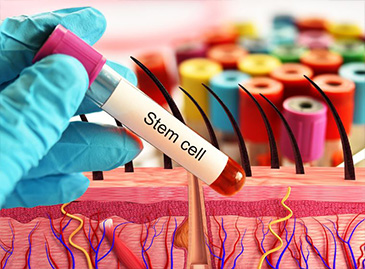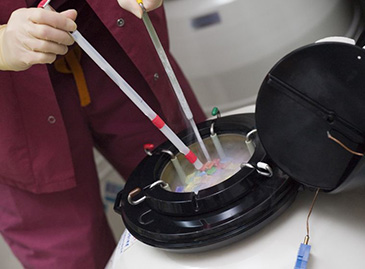
Ovarian Cancer: Symptoms, Types, and Treatment Options
What are the symptoms?
Although medical science has advanced, it has not been able to figure out how when ovarian cancer first develops it might not cause any noticeable symptoms. When ovarian cancer symptoms happen, they’re usually attributed to other, more common conditions.
Signs and symptoms of ovarian cancer may include:
- Abdominal bloating or swelling
- Quickly feeling full when eating
- Weight loss
- Discomfort in the pelvic area
- Fatigue
- Back pain
- Changes in bowel habits, such as constipation
- A frequent need to urinate
How ovarian cancer tumor develops
Ovaries are reproductive glands found only in females (women). The ovaries produce eggs (ova) for reproduction. The eggs travel from the ovaries through the fallopian tubes into the uterus where the fertilized egg settles in and develops into a fetus. The ovaries are also the main source of the female hormones estrogen and progesterone. One ovary is on each side of the uterus.
The ovaries are mainly made up of 3 kinds of cells. Each type of cell can develop into a different type of tumor:
- Epithelial tumors start from the cells that cover the outer surface of the ovary. Most ovarian tumors are epithelial cell tumors.
- Germ cell tumors start from the cells that produce the eggs (ova).
- Stromal tumors start from structural tissue cells that hold the ovary together and produce the female hormones estrogen and progesterone.
Some of these tumors are benign (non-cancerous) and never spread beyond the ovary. Malignant (cancerous) or borderline (low malignant potential) ovarian tumors can spread (metastasize) to other parts of the body and can be fatal.
Kinds of ovarian tumors
There are some kinds of ovarian tumors with their descriptions below.
Epithelial ovarian tumor
Epithelial ovarian cancer is the most common type of ovarian cancer. This cancer develops in the epithelial tissue, a thin lining that covers the outside of an ovary. Epithelial ovarian tumors start on the outer surface of the ovaries. These tumors can be benign (not cancer), borderline (low malignant potential), or malignant (cancer).
Benign epithelial tumor
Epithelial ovarian tumors that are benign don’t spread and usually don’t lead to serious illness. There are several types of benign epithelial tumors including serous cystadenomas, mucinous cystadenomas, and Brenner tumors.
Borderline epithelial tumor
When looked at in the lab, some ovarian epithelial tumors don’t clearly appear to be cancerous and are known as borderline epithelial ovarian cancer. The two most common types are atypical proliferative serous carcinoma and atypical proliferative mucinous carcinoma. These tumors were previously called tumors of low malignant potential (LMP tumors). These are different from typical ovarian cancers because they don’t grow into the supporting tissue of the ovary (called the ovarian stroma). If they do spread outside the ovary, for example, into the abdominal cavity (belly), they might grow on the lining of the abdomen but not into it.
Malignant epithelial tumor
Carcinomas are malignant epithelial tumors. About 85% to 90% of malignant ovarian cancers are epithelial ovarian carcinomas. These tumor cells have several features. When looked at in the lab, results classify epithelial ovarian carcinomas into different types. The serous type is by far the most common and can include high-grade and low-grade tumors. The other main types include mucinous, endometrioid, and clear cells.
- Serous carcinomas (52%)
- Clear cell carcinoma (6%)
- Mucinous carcinoma (6%)
- Endometrioid carcinoma (10%)
Stromal tumor
Ovarian stromal tumors develop in the ovaries’ structural connective tissue cells that produce the female hormones estrogen and progesterone. Stromal cells are among the three most common cell types to be affected by ovarian cancer; however, stromal tumors represent only about 1% of all ovarian cancers.
Germ cell tumor
Ovarian germ cell tumors develop from reproductive cells (germ cells) of the ovaries. Your ovaries are two small organs in your pelvis. Ovaries are part of the female reproductive system. They produce eggs and female hormones.
Most germ cell tumors in the ovaries are benign (not cancer). Rarely, the tumors are malignant (cancerous). Ovarian germ cell tumors usually develop in young women under 20, but they can grow in older women, too. Most often, a tumor only grows in one ovary.
Treatment for malignant tumors includes surgery or chemotherapy.
Tumor type
Firstly, type I tumor. Type I tumors tend to grow slowly and cause fewer symptoms. These tumors also seem not to respond well to chemotherapy. Low-grade (grade 1) serous carcinoma, clear cell carcinoma, mucinous carcinoma, and endometrioid carcinoma are examples of type I tumors.
Secondly, we talk about type II tumors. Type II tumors grow fast and tend to spread sooner. These tumors tend to respond better to chemotherapy. High grade (grade 3) serous carcinoma is an example of a type II tumor.
Other kinds of cancer similar to ovarian cancer
PPC – Primary peritoneal carcinoma (PPC) is rare cancer closely related to epithelial ovarian cancer. At surgery, it looks the same. In the lab, PPC also looks just like epithelial ovarian cancer. This is because PPC appears to start in the cells lining the inside of the fallopian tubes.
Fallopian tube cancer – This is another rare cancer that is similar. It begins in the tube that carries an egg from the ovary to the uterus (the fallopian tube). Like PPC, fallopian tube cancer and ovarian cancer have similar symptoms. The treatment for fallopian tube cancer is much like that for ovarian cancer, but the outlook (prognosis) is slightly better.
Screening tests for ovarian cancer
If you are at average risk for ovarian cancer, there are no recommended screening tests. However, you should have a gynecological exam as often as your provider suggests.
There are a few other tests that are currently being studied for ovarian cancer screening. One is a blood test that looks for a protein named CA-125, for instance. CA-125 is a protein that is shed from damaged ovary cells and is often high in ovarian cancer. There are a few problems with CA-125 as a screening test. The level can be high in many other diseases besides ovarian cancer. These include other cancers, endometriosis, fibroids, menstruation, colitis, diverticulitis, pancreatitis, lupus, and inflammation of the lining of the lung or heart.
One possible way to use CA-125 for ovarian cancer screening is to check it and then re-check it 6 months later. If it greatly increases over this time, then ovarian cancer is more likely. The problem is that many patients without ovarian cancer will have elevated CA-125 levels and then have unneeded further workup (called a false positive). You could also have a false negative result, where the CA-125 is not higher, but there is actually cancer present and it goes unrecognized, for instance.
Another method for ovarian cancer screening is transvaginal ultrasound. Ultrasound is an imaging test that uses sound waves that bounce off of tissues and provide a picture of whatever is being looked at. By inserting an ultrasound probe into a woman’s vagina, healthcare providers can get a good look at her ovaries.
Causes
While it’s not clear what causes ovarian cancer, doctors have identified things that can increase the risk of the disease.
Doctors know that ovarian cancer begins when cells in or near the ovaries develop changes (mutations) in their DNA. A cell’s DNA contains the instructions that tell the cell what to do. The changes tell the cells to grow and multiply quickly, creating a mass (tumor) of cancer cells. The cancer cells continue living when healthy cells would die. They can invade nearby tissues and break off from an initial tumor to spread (metastasize) to other parts of the body, for instance.
Factors that may have a role in ovarian cancer
- Older age. The risk increases as you age.
- Inherited gene changes. The genes that increase the risk include BRCA1 and BRCA2. These genes also increase the risk of breast cancer.
- While several other gene changes are known to increase the risk, gene changes associated with Lynch syndrome and the genes BRIP1, RAD51C, and RAD51D also count.
- Family history of ovarian cancer. If you have blood relatives who have been diagnosed, you may have an increased risk of the disease.
- Being overweight or obese. Being overweight or obese is a cause. As a result, it increases the risk.
- Postmenopausal hormone replacement therapy. Taking hormone replacement therapy to control menopause signs and symptoms may increase the risk, for instance.
- Endometriosis. Endometriosis is an often painful disorder in which tissue similar to the tissue that lines the inside of your uterus grows outside your uterus.
- Age when menstruation started and ended. Beginning menstruation at an early age, or for instance, starting menopause at a later age, or both may increase the risk.
- Never having been pregnant. If you’ve never been pregnant, you may have an increased risk.




